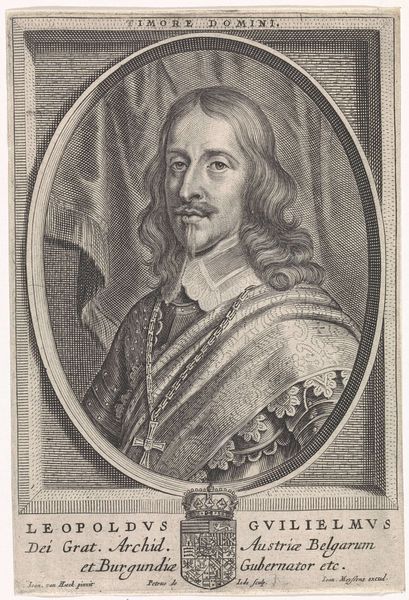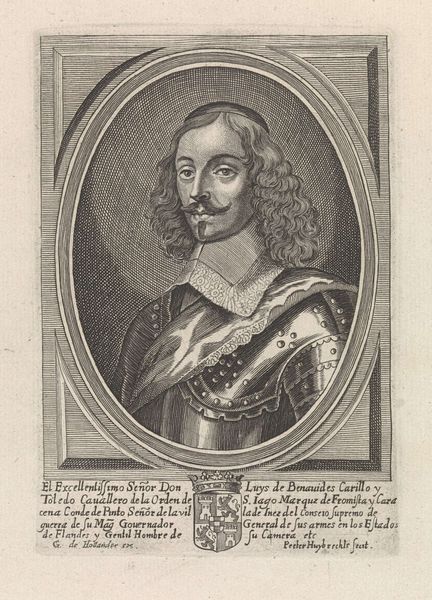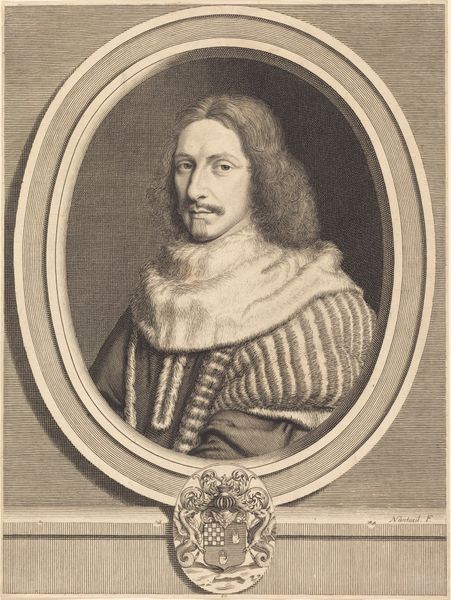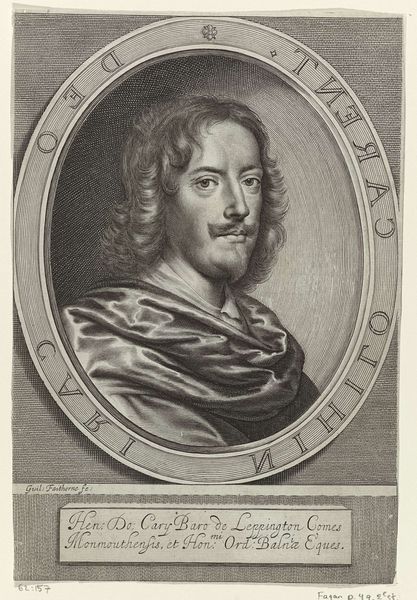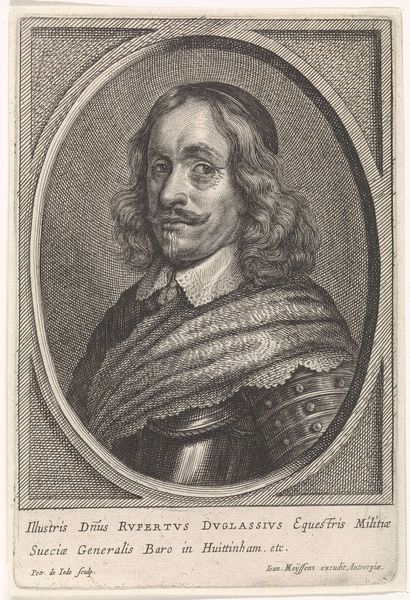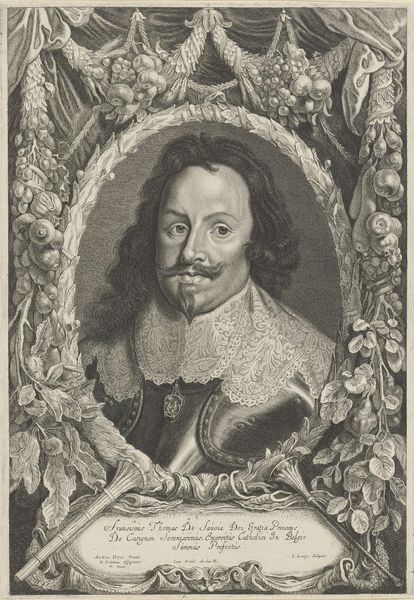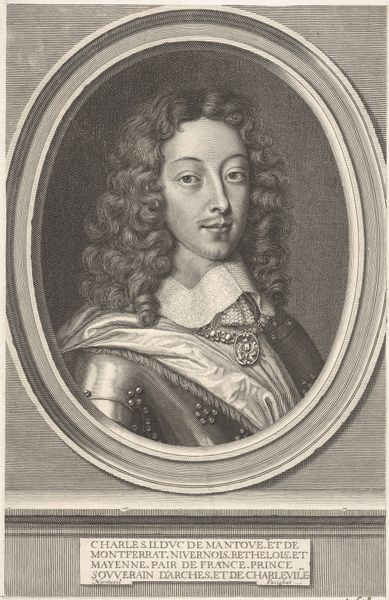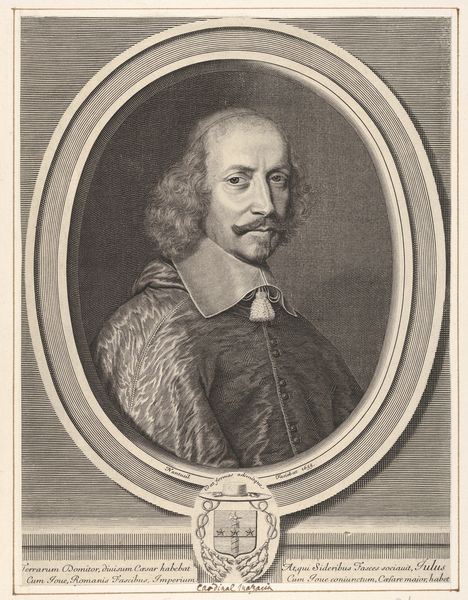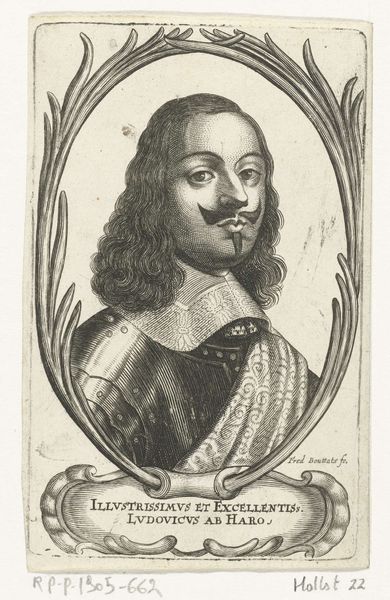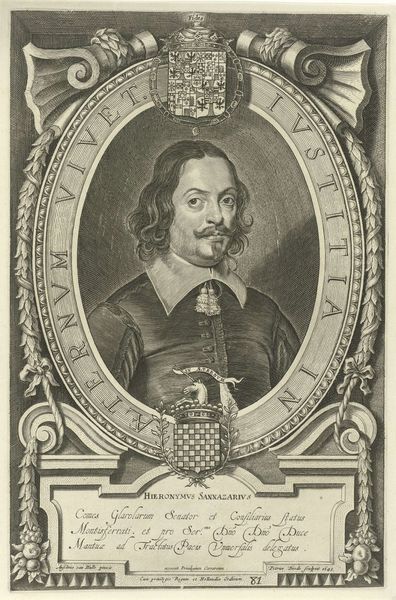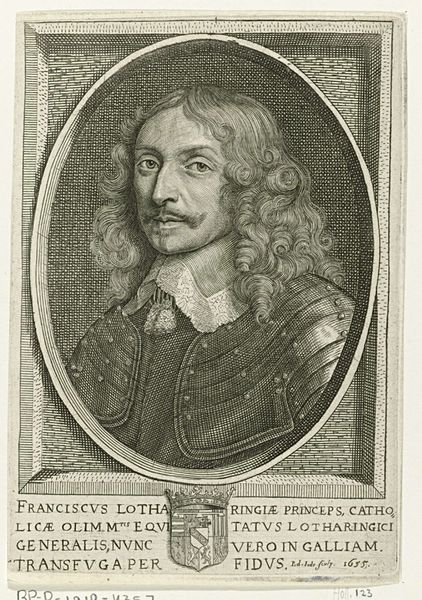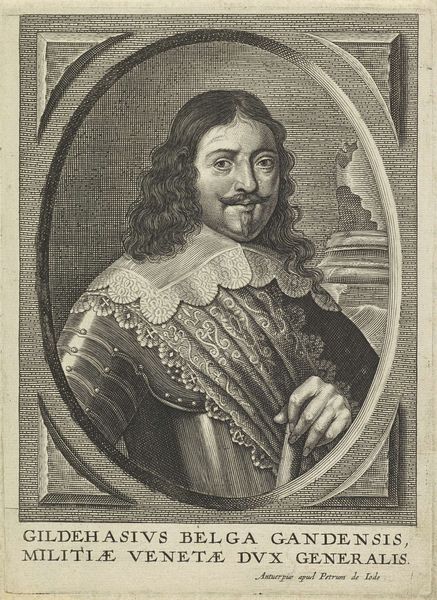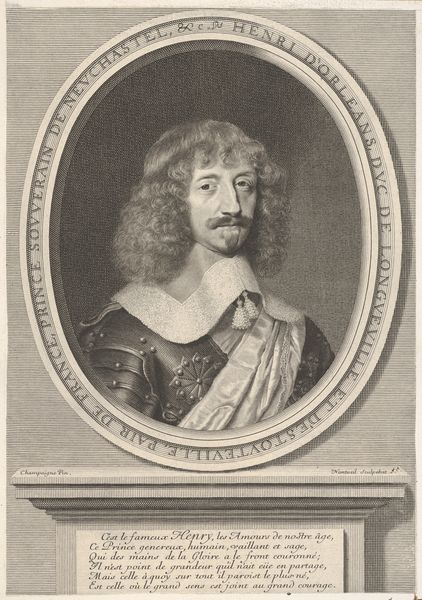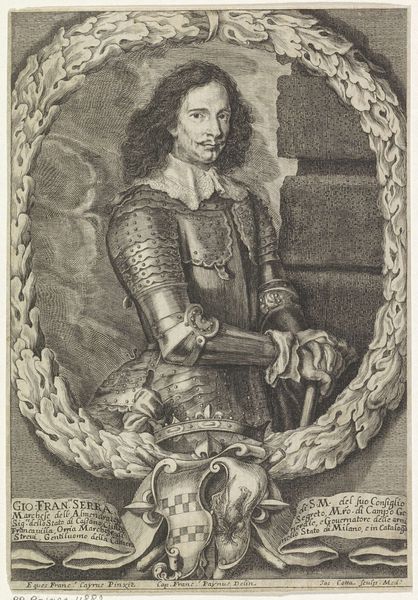
print, intaglio, engraving
#
portrait
#
baroque
# print
#
intaglio
#
old engraving style
#
pencil drawing
#
portrait drawing
#
engraving
Dimensions: height 167 mm, width 115 mm
Copyright: Rijks Museum: Open Domain
Curator: Looking at this intaglio print by Pieter de Jode II, executed sometime between 1628 and 1670, I’m immediately struck by the intensity of the subject’s gaze. It’s piercing, almost challenging. Editor: Yes, it is imposing. The portrait seems steeped in formality. Is that Luis de Benavides Carrillo de Toledo? Curator: Precisely. And his attire isn't just decorative, it signifies status and military prowess, particularly through the armor. The portrait encapsulates an age where image and representation were key to solidifying power. It almost has that gravitas we see in portraits of emperors or generals. Editor: The level of detail achieved through engraving is incredible—the intricate lace collar, the textures in his hair. There's a kind of vulnerability in it too, despite all the armor. A tension I would expect from a leader caught in his official role. I mean, portraits like these acted as symbols of authority for wider audiences back in the day. How did they shape perceptions and contribute to state image-building? Curator: These images become the visual currency of power. The controlled environment of their creation projects certain values. Strength, wisdom, piety are projected whether entirely true or not. That consistent projection eventually becomes absorbed by a culture, impacting our reading of future generations' image-making too. Think of the Dutch Golden Age and how these set the tone for similar works from then on! Editor: So, this portrait tells us more than just Luis de Benavides Carrillo de Toledo's likeness; it communicates the cultural aspirations of leadership at that time. Fascinating how carefully crafted visual imagery could embody not just an individual but entire systems of power and cultural meaning. Curator: Precisely. Consider that we, centuries removed, are still decoding that messaging and forming opinions, understanding political symbols over vast time spans and how certain leaders continue being remembered over others.
Comments
No comments
Be the first to comment and join the conversation on the ultimate creative platform.
